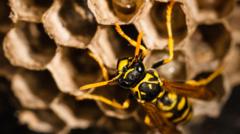The trend of turning selfies into miniature dolls is captivating many, but experts urge users to consider the impact of such technologies on privacy, culture, and the planet.
**The AI Doll Craze: Fun or a Cause for Concern?**

**The AI Doll Craze: Fun or a Cause for Concern?**
As generative AI tools like ChatGPT rise in popularity for creating personalized dolls, concerns about their environmental and ethical implications grow.
In recent weeks, social media has been abuzz with the rise of AI dolls—miniature self-representations generated through artificial intelligence applications such as ChatGPT. Users upload their pictures and specify generation prompts, resulting in personalized dolls reminiscent of popular toy lines. This trend has gained traction among influencers and brands looking to engage audiences with unique content. However, experts warn that amid the fun, serious considerations about AI's environmental footprint and ethical use have emerged.
To create these dolls, users can navigate a straightforward process on AI platforms. By providing a selfie and detailed preferences regarding appearance, clothing, and accessories, the AI generates the image. Users often share their experiences online, which can include humorous errors where generated dolls bear little resemblance to their human counterparts. Not limited to personal use, even brands like beauty giant Mario Badescu have joined the phenomenon, illustrating how widespread this trend has become.
But why is this trend capturing attention? Social media analysts highlight the ease with which generative AI accelerates content creation, intensifying users' fears of missing out. Jasmine Enberg from eMarketer suggests that as AI tools become more integral to online interaction, these viral trends will continuously reappear in our feeds.
Yet the trend is not without its detractors. Environmental concerns are at the forefront of the discussion, with critics pointing out the enormous energy consumption required to support AI-driven tools. Professor Gina Neff from Queen Mary University London emphasized that the electricity used by AI data centers could surpass that of 117 countries in a year, which raises alarms about the ethical implications of generating whimsical AI images. TechRadar’s Lance Ulanoff humorously noted the potential environmental cost, joking that each AI-generated meme could metaphorically "kill a tree."
Moreover, as generative AI weaves together existing brands and characters, questions about copyright and originality arise. Neff articulated the troubling implications of AI-generated dolls, dubbing them a "triple threat" to privacy, culture, and the environment. The widespread personalization of AI results may seem appealing, but they carry risks that demand attention. Jo Bromilow from MSL UK underscored the importance of establishing responsible guidelines for AI application in a rapidly changing digital landscape.
Testing the AI doll generation process, BBC technology editor Zoe Kleinman shared her experiences navigating the AI tool to create a petite version of herself. Initially, her job title was deemed inappropriate, highlighting the need for sensitivity to content rules. After several tries, her final version still fell short of her expectations, prompting a reflection on the degree of effort required for this fleeting trend and the computational resources consumed in the process.
As creators and consumers alike continue to experiment with the AI doll phenomenon, the dialogue surrounding its broader implications remains pivotal. Engaging with these technologies can be delightful, but it is essential to evaluate their impact on our environment and society for sustainable future use.
To create these dolls, users can navigate a straightforward process on AI platforms. By providing a selfie and detailed preferences regarding appearance, clothing, and accessories, the AI generates the image. Users often share their experiences online, which can include humorous errors where generated dolls bear little resemblance to their human counterparts. Not limited to personal use, even brands like beauty giant Mario Badescu have joined the phenomenon, illustrating how widespread this trend has become.
But why is this trend capturing attention? Social media analysts highlight the ease with which generative AI accelerates content creation, intensifying users' fears of missing out. Jasmine Enberg from eMarketer suggests that as AI tools become more integral to online interaction, these viral trends will continuously reappear in our feeds.
Yet the trend is not without its detractors. Environmental concerns are at the forefront of the discussion, with critics pointing out the enormous energy consumption required to support AI-driven tools. Professor Gina Neff from Queen Mary University London emphasized that the electricity used by AI data centers could surpass that of 117 countries in a year, which raises alarms about the ethical implications of generating whimsical AI images. TechRadar’s Lance Ulanoff humorously noted the potential environmental cost, joking that each AI-generated meme could metaphorically "kill a tree."
Moreover, as generative AI weaves together existing brands and characters, questions about copyright and originality arise. Neff articulated the troubling implications of AI-generated dolls, dubbing them a "triple threat" to privacy, culture, and the environment. The widespread personalization of AI results may seem appealing, but they carry risks that demand attention. Jo Bromilow from MSL UK underscored the importance of establishing responsible guidelines for AI application in a rapidly changing digital landscape.
Testing the AI doll generation process, BBC technology editor Zoe Kleinman shared her experiences navigating the AI tool to create a petite version of herself. Initially, her job title was deemed inappropriate, highlighting the need for sensitivity to content rules. After several tries, her final version still fell short of her expectations, prompting a reflection on the degree of effort required for this fleeting trend and the computational resources consumed in the process.
As creators and consumers alike continue to experiment with the AI doll phenomenon, the dialogue surrounding its broader implications remains pivotal. Engaging with these technologies can be delightful, but it is essential to evaluate their impact on our environment and society for sustainable future use.






















